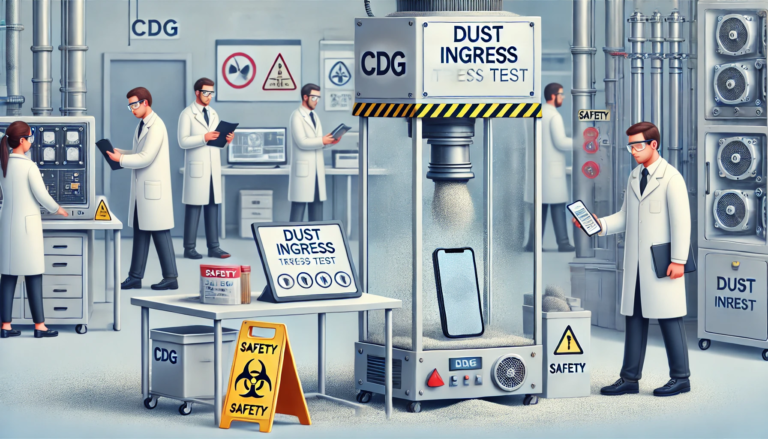The Consequences of Not Having an IP Rating: Why Ingress Protection Matters
In our increasingly connected world, where technology is embedded in nearly every aspect of our lives, the reliability and durability of electronic devices have never been more critical. One often overlooked but essential factor in ensuring this reliability is the Ingress Protection (IP) rating. In this blog post, we’ll explore the consequences of not having an IP rating for your devices and why understanding this rating is crucial for both manufacturers and consumers.
What is an IP Rating?
Ingress Protection (IP) ratings are standards used to define the level of protection that enclosures provide against the ingress of solid objects (like dust) and liquids (like water). These ratings are designated by the IP code, which includes two digits: the first indicates protection against solid particles, and the second indicates protection against liquids. For example, an IP68 rating signifies that the device is dust-tight and can withstand continuous immersion in water.
Why is an IP Rating Important?
Protection Against Environmental Hazards
Devices without an IP rating are susceptible to damage from dust, dirt, moisture, and other environmental factors. This exposure can lead to short circuits, corrosion, and ultimately, device failure. For instance, a smartphone used in outdoor conditions without an IP rating might suffer from water damage if exposed to rain or accidental spills, rendering it unreliable and costly to repair or replace.
Enhanced Durability and Longevity
An IP rating provides assurance of a device’s durability and longevity. Electronics with high IP ratings are designed to withstand harsher conditions, leading to longer lifespans and fewer maintenance issues. For example, industrial machinery often requires high IP ratings to function effectively in dusty or wet environments, reducing downtime and maintenance costs.
Compliance with Industry Standards
Many industries have strict regulations regarding the protection of electronic devices. For instance, medical devices, automotive components, and consumer electronics all have specific IP rating requirements to ensure safety and reliability. Failure to meet these standards can result in non-compliance issues, legal repercussions, and a loss of consumer trust.
Consumer Confidence
For consumers, an IP rating serves as a critical indicator of a product’s reliability. Devices with clear IP ratings can confidently be used in various environments without the worry of damage. This is particularly important for high-value items such as outdoor cameras, smartwatches, and rugged phones, where users expect robust performance in challenging conditions.
Real-World Examples
Outdoor Electronics: A GPS device used in rugged terrains benefits significantly from a high IP rating. Without proper protection, exposure to dust and water could impair functionality and accuracy, leaving users stranded or facing significant inconvenience.
Medical Devices: In a hospital setting, equipment like infusion pumps and diagnostic devices must have adequate IP ratings to prevent contamination from fluids and ensure patient safety.
Consumer Gadgets: Consider a smartwatch designed for swimmers. An IP68 rating ensures that the device can withstand prolonged submersion in water, making it suitable for swimming without risking damage.
Consequences of Lacking an IP Rating
Increased Maintenance and Repair Costs
Devices without proper ingress protection are more likely to suffer from environmental damage, leading to frequent repairs or replacements. This not only increases operational costs but also affects the overall efficiency and reliability of the equipment.
Potential Safety Hazards
Inadequately protected devices can pose safety risks, especially in industrial or medical environments. For example, an unprotected electrical enclosure might lead to electric shocks if exposed to water or dust, creating hazardous situations for users.
Negative Impact on Brand Reputation
Manufacturers who fail to provide adequate IP ratings may face customer dissatisfaction and damage to their brand reputation. Consumers expect reliability and durability, and a lack of proper protection can lead to negative reviews and a loss of trust in the brand.
Practical Tips for Ensuring Proper Ingress Protection
Assess Your Environment: Determine the environmental conditions where the device will be used and choose an appropriate IP rating. Consider factors such as exposure to dust, water, or extreme temperatures.
Verify IP Ratings: Ensure that the devices you purchase or manufacture have clearly stated IP ratings and comply with relevant industry standards.
Regular Maintenance: Even with an IP rating, regular maintenance and inspections can help identify potential issues early and ensure continued performance.
In summary, the absence of an IP rating can lead to significant consequences, from increased maintenance costs and potential safety hazards to negative impacts on brand reputation. For both manufacturers and consumers, understanding and utilizing IP ratings is crucial for ensuring the reliability, durability, and safety of electronic devices
At CDG, we provide comprehensive ingress protection testing services to help you ensure that your products meet the necessary standards and perform reliably in their intended environments. Contact us today to learn more about how our IP testing services can benefit your business and enhance your product offerings.


